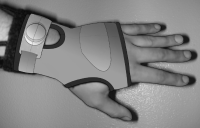May 31, 2004
Post-Mortem on RFID Activity Inference UBICOMP Paper Reviews
I need to review Horvitz's work on activity recognition to understand how he used partial orders and timing. That work was mentioned (probably by him!), but I'm not sure that I understand how that info was incorporated in Lumiere.
Everyone can find something to critique about the data collection, but I think that if I can sufficiently justify the models then the data collection will be good enough.
Posted by djp3 at May 31, 2004 01:22 PM | TrackBack (0)BTW, can someone forward me the reviews?
There are a few answers to the object-to-activity mapping question i.e. why not just represent activities using bags of words:
0. If you need to map activities in detail (for prompting, assessing quality of execution, etc), you need a more finegrained notion of how much of the activity was executed.
1. Many activities use similar objects (witness the distinguishability numbers from the WWW paper; we need to do a completely unordered bag-of-words version of these tests). They may be distinguished by order, timing, etc (we may even be missing some of this info) e.g. if during a sample interval we touch pot and spatula, it makes a difference whether we saw soap and sponge or pasta/sauce in the previous interval. See note below for interval.
2. It's unclear what interval to sample objects over for the set of objects, for a given activity e.g. you need to gather observations over a different period for making tea, compared to making a phone call.
As Don mentions, the biggest missing piece is just data illustrating the need for these. By far the biggest need in the project right now (actually, as of four monthos ago; something we should have definitely done before the AAAI sub) is on getting data that exercises our machinery better. I actually think that even our existing data can potentially make the points we want to e.g. if we use bag-of-words, we should for sure be able to get a few models from our library that look similar for some of the activities we care about, modulo noise. I'm pretty sure we haven't even done this simple step.
The first thing I intend to do after I resurface from my current commitment (mid-June hopefully), is to get lots more data so we can sharpen these arguments.
The first set of data was only supposed to support the CHI paper that said that we could pick up these activities, not a paper on the subtleties of inference.
Having said all that, I'd like to see these reviews.
Posted by: Matthai Philipose at May 31, 2004 06:34 PMThe reviews can be accessed by the authors here:
http://edas.info/PaperShow.cgi?m=1568933233
-Don
Posted by: Don at June 1, 2004 08:22 AM

